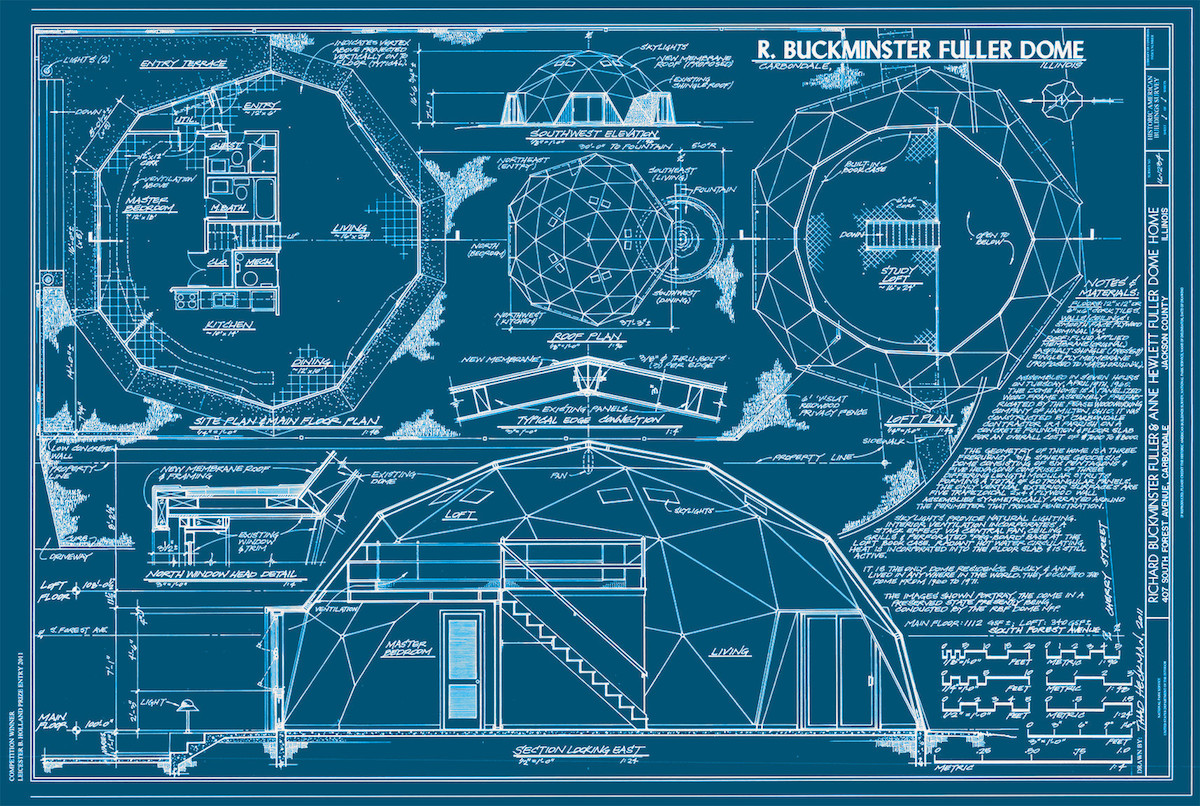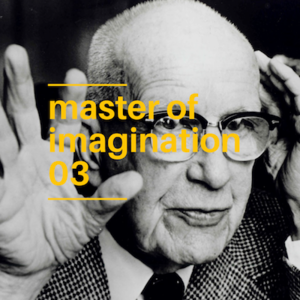03: Buckminster Fuller

Buckminster Fuller, inventor, artist, architect, designer, visionary, futurist. A lot can be said about this man- more than this short blog will allow but I‘d like to highlight some of the principles of imagination I have gleaned (and use!) from this ‘anticipatory designer’.
Think ‘wide'
Fuller was committed to framing problems and opportunities in their widest possible context. ‘Zooming’ out to reframe and look at countless directions until he found fundamental causes that needed to be changed or disrupted.
Anticipate the future, don’t let it surprise you
Fuller was wholly in tune with technological and human need trends and this enabled him to anticipate upcoming problems and potential optimal solutions. The ability to tune in on weak signals is becoming a major leadership and organisational skill that in my experience is very lacking in most companies today.

Geodesic Dome
A lot of Fuller’s own ideas were years ahead of their time and indeed have come into their own since he passed away. Fuller’s inventions are numerous, the Dymaxion car, his ‘world design science decade proposal’ more or less morphed into UN millennium developmental goals. Geodesic geometry postulated by Fuller, was discovered as a core design principle at a molecular level.
Respect gestation curves
Fuller championed the importance of understanding the timing by which things and systems evolve – his book ‘Critical Path’ book details hundreds of years of ‘gestation’. The importance for business leaders to understand gestation and make the right decisions at the right times is critical in this turbulent age.
Think or Be a ‘Trim Tab’
A trim tab acts as a small rudder to turn the larger rudder of giant ships – Fuller used this analogy to get across the point that small and strategically placed interventions can have large scale and profound impacts.

Dymaxion car
Ask obvious and naïve questions
The power of why and ‘stupid’ questions, based on first principles, was a key tenet to Fullers thinking processes, so as not to accept current logic and break through the ‘we have always done it that way’ thinking.
Solve problems by doing/individual can make a difference
Fuller lived a full on, hands on, action centred life. His truly stunning array of projects included everything from shelters to flying cars, to social policy, 27 books, hundreds of articles, and 28 US patents. Fuller felt individuals could make a difference and that we are all leaders, even an ‘ordinary man’ like Fuller (as he used to describe himself).
Collaborating with RTE’s The Innovation Show, Katawave’s ‘Masters of Imagination’ is a series where we look at the pillars upon which these interesting built how they work. Learn about their key principles and how to adopt them yourself to create a truly imaginative and innovative organisation. Listen to RTE’s radio 1 on Saturday’s at 3pm. Or download the podcast on iTunes if you missed it.
